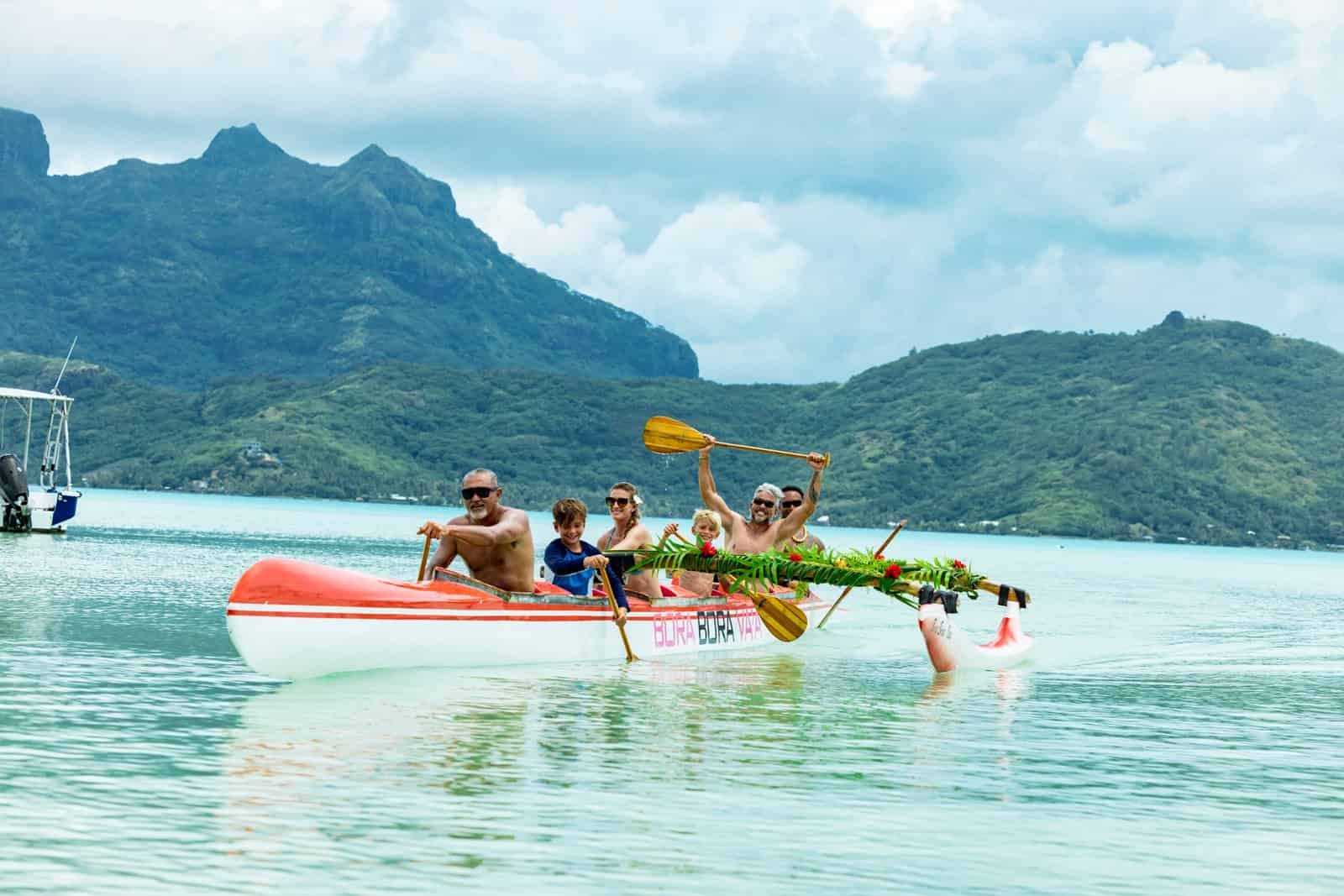Essential in Polynesia, the outrigger pirogue, known as a “va’a”, was originally used to travel from island to island and to fish in the lagoon and open sea. These boats were built using plant-based materials, such as ropes made from coconut husk, hulls from tree trunks and sails from pandanus leaves. Today, va’a has become our “national” sport. We row in the morning, between noon and two or in the evening at sunset. There are va’a clubs in every commune. The Hawaiki Nui Va’a in October or November, linking the islands of Huahine, Raiatea, Taha’a and Bora Bora, is one of the sport’s most emblematic competitions.
The outrigger canoe, commonly known as the “va’a”, plays an essential role in Polynesian life. Originally, it was the preferred means of transport between islands, as well as for fishing, whether in the calm lagoon or on the rough high seas. These traditional boats were built from natural materials, such as ropes made from coconut husk, hulls crafted from tree trunks and sails made from pandanus leaves.
Today, va’a has evolved to become Polynesia’s undisputed national sport. Local people paddle their boats in the morning, at lunchtime or in the evening at sunset. Va’a clubs can be found in every commune, reflecting the widespread enthusiasm for this discipline that goes beyond mere tradition.
Among the emblematic competitions that highlight the importance of va’a, the Hawaiki Nui Va’a, held in October or November, holds a special place. This legendary race links the islands of Huahine, Raiatea, Taha’a and Bora Bora, offering rowers the opportunity to sail through the crystal-clear waters of these paradise islands. The Hawaiki Nui Va’a is much more than just a sporting competition, it embodies the spirit of unity, competition and celebration of Polynesian culture, reinforcing the inseparable link between va’a and the identity of French Polynesia.
